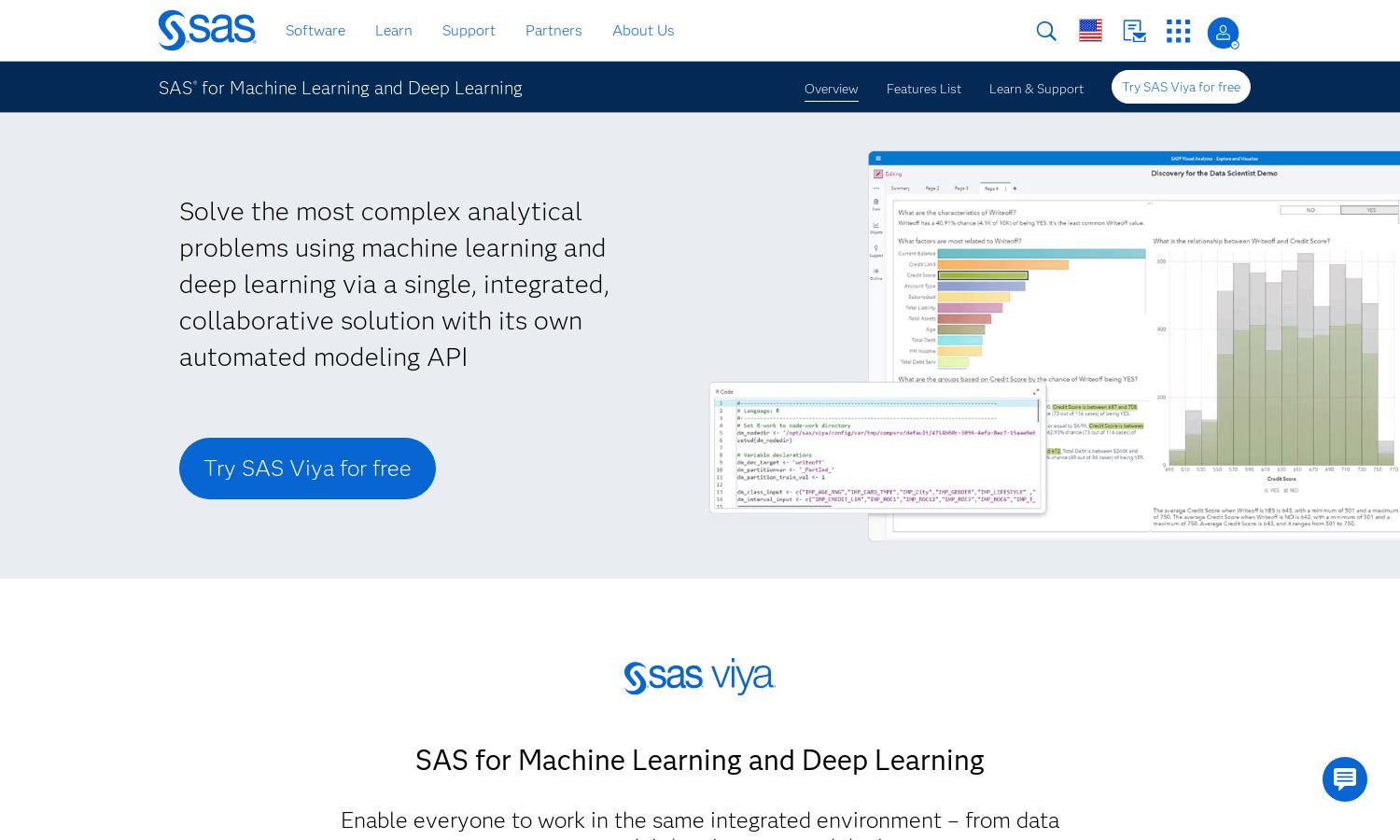SAS

About SAS
SAS is a leading platform for machine learning and deep learning, designed for data scientists and business analysts. Its integrated environment streamlines model development and deployment through automated insights and multi-language support. With superior performance and collaboration features, SAS enables teams to tackle complex analytical challenges efficiently.
SAS offers flexible pricing plans tailored for different user needs, from individual subscriptions to enterprise-level solutions. Each tier provides progressively advanced features to enhance analytics capabilities. Users benefit from comprehensive support and tools that maximize the value of their investment in SAS, with potential discounts for annual commitments.
SAS boasts a user-friendly interface that facilitates smooth navigation and quick access to analytical tools. Its design integrates a powerful visual workspace, enabling users to seamlessly create, compare, and deploy machine learning models. Enhanced features like intuitive data preparation ensure an engaging experience on the SAS platform.
How SAS works
Users begin their journey with SAS by signing up and accessing the comprehensive dashboard. Here, they can navigate features such as data preparation, model building, and deployment with ease. The platform facilitates collaboration among team members with integrated communication tools, leveraging high-level APIs for enhanced model development and analysis.
Key Features for SAS
Automated Insights Generation
SAS features automated insights generation, a key component that allows users to quickly identify critical variables and model performance. This functionality enhances decision-making by providing intuitive summaries in simple language, making analytics accessible for everyone in the organization and improving overall collaboration.
Natural Language Processing
Natural Language Processing (NLP) capabilities in SAS empower users to interpret complex analytical reports in straightforward language. This feature enhances understanding across teams, facilitating communication and ensuring that insights can be easily leveraged for informed decision-making, ultimately driving better business outcomes.
Integrated Machine Learning Pipeline
SAS provides an integrated machine learning pipeline that allows users to handle the entire analytics life cycle efficiently. This unique offering simplifies data preparation, model building, and deployment, making advanced analytics accessible to users regardless of their technical skill level, thereby fostering a collaborative environment.
You may also like:








